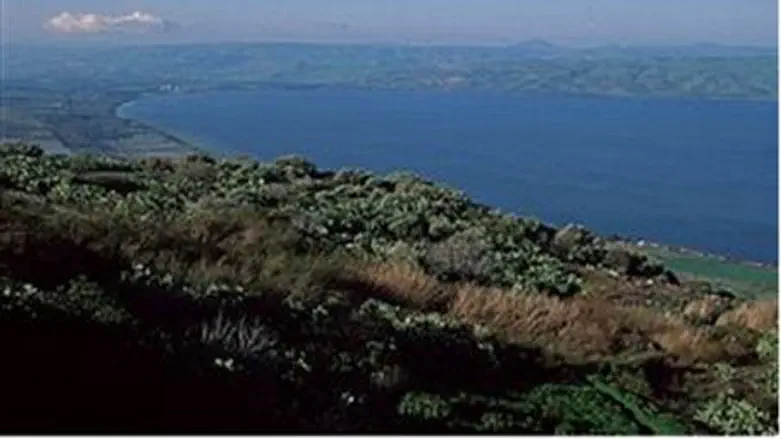
The water level in Lake Kinneret (the Sea of Galilee) dropped by nearly 11 inches in September, according to environmental officials.
The unhappy news follows Israel's standard hot, dry summer which began with the water level standing at 16.9 inches above the “red line,” 213 meters below sea level.
The lake's water level has now dropped to 16.9 inches below the red line, the recommended level at which water should no longer be drawn from the lake. The level is also only 56.9 inches away from the “black line,” 215 meters below sea level, beyond which it is dangerous to pump water from the lake.
Salt springs at the bottom of the basin suppressed by the heavy water pressure above could salinate Israel's only sweet water source if water were to be pumped at that point.
The water level of the lake came perilously close to reaching that level on December 11, 2010, when it descended to 214.12 meters below sea level. The lowest level ever reached by the lake in modern times occurred on November 29, 2001, when it reached 214.87 meters below sea level.
During the winter, it seemed as though the winter rains might just be enough to replenish the water supply in the lake, which serves as a massive reservoir for the country.
The Kinneret is 47 meters deep at its deepest point. It is fed by rainwater from various streams in the Galilee and Golan Heights, such as the Jordan River, Nahal Meshushim, Nahal Amud, Nahal El-Al and Nahal Yehudiya, all of which are often augmented in winter by melted snow from Mount Hermon.
In March, the water level finally reached the the red line, and environmentalists breathed a sigh of relief, believing the worst was over.
But there was not enough rain to make up for five years of drought. When the traditional switch from the seasonal prayer for dew to the seasonal prayer for rain comes this Simchat Torah, Israelis will add a special passion this year to the service.